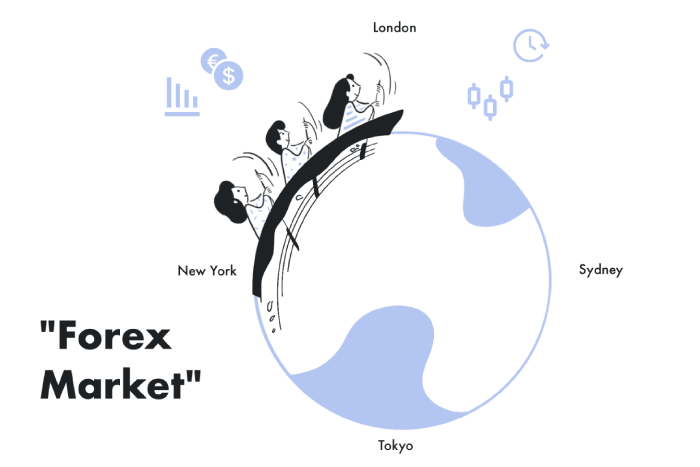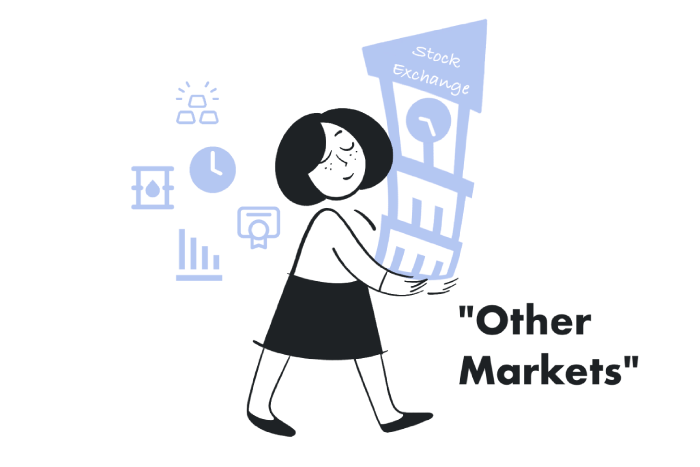How the Forex Market Differs from Other Financial Markets
How the Forex Market Differs from Other Financial Markets
"Discover how the Forex market differs from stocks, bonds, and commodities. Learn the unique features that make currency trading the largest and most dynamic market in the world."
Wikilix Team
Educational Content Team
15 min
Reading time
Beginner
Difficulty

insert your conWhen people consider financial markets, they frequently direct their attention to the stock market, including the flashing tickers, corporate earnings announcements, and sensationalism on Wall Street. However, there is another market that will be discussed, which operates on a scale significantly larger than the stock market, making it somewhat embarrassing to consider it a market.
This market is called the foreign exchange market, or Forex, where every day trillions of dollars of currencies are bought and sold through a fast-paced market that operates 24 hours a day, globally without ever closing. Despite Forex's size, many people do not fully understand how it operates and interacts with other markets, often mixing it with stock, bond, or commodity markets. Knowing these differences is interesting, but an essential consideration for someone who is going to become involved in the investment world.
1. Market Size and Liquidity
The first and most dramatic difference is size. There is a global volume of Forex of over $7 trillion every day. Forex is the largest and most liquid financial market in the world. Compare that to stock markets; even major exchanges like the NYSE or the NASDAQ will only offer a mere fraction of that global trading volume in a day.
The liquidity of Forex means that you will get instant access to buy or sell a currency pair without worrying about the price moves you make with your trade. Less-liquid markets like small-cap stocks or commodities will shift and move dramatically when you make large order trades—the keys to trade execution.

2. Hours of Operation and Access
There is also an essential difference in hours of operation. The stock market has hours of operation, which are determined by the time zone of each exchange; e.g., the New York Stock Exchange has hours of operation from 9:30 a.m. to 4:00 p.m. EST, Monday through Friday.
The Forex market is open 24 hours a day, 5 days a week, with trading sessions in Sydney, Tokyo, London, and New York, and then repeating the cycle. This 24/5 access allows Forex traders to react to current global events in real time, rather than having to wait for the stock market to open.
The 24/5 schedule also allows more access to traders in different parts of the world, including Asia, Europe, and the Americas. Other than the trader's account currency, there is always a session open somewhere in the world.
3. Nature of the Asset
In the stock market, you buy shares - small ownership in a company. In the bond market, you are lending money (basis of trust) to a government and/or corporation. In the commodities market, you are trading a tangible item that could be precious or raw, such as gold, oil, or wheat.
In Forex, you are trading currency in pairs. Every time you exchange currency, you must buy one currency and sell the other. For instance, buying the EUR/USD would be considered "long EUR/USD", while you are really "longing" for the euro and "shorting" the US dollar. This bifurcation of value is what makes Forex unique; it's always at least a pair value. The euro can never be priced "absolutely," because it will always be expressed relative to another currency.
4. Decentralized vs. Centralized
Most financial markets are centralized. Stock trades are executed through an exchange that establishes rules and listing requirements for stock to trade centrally. In the energy market, there are no central exchanges for energy contracts; trades take place over numerous banks and brokers through electronic communications methods. It may offer greater flexibility and lower commissions than centralized trading, but the transaction may lack transparency. In stocks, you can see the volume executed through the exchange. At the same time, the forex market provides estimated volumes by broad market levels, as everyone can see prices among many participants on many platforms.
5. Leverage & Risk
Forex trading is known to have so much higher leverage than other markets. Stock traders typically have levers of 2:1 or 4:1 leverage in many markets, but forex traders have leverage ratios of 50:1, 100:1, or more in other jurisdictions. Leverage provides the benefit of generating higher profits, but it also carries the risk of magnifying losses. A small price change in the wrong direction can deplete an account very quickly. Most stock or bond investors don't take this risk.
6. Influencing Factors
Different markets operate based on different motivating principles. The price of a stock is influenced by the company's earnings, management decisions regarding the investment of these earnings, and/or the industry conditions. Other examples are bonds, which are influenced by interest rates and credit ratings. In Forex, a unique combination of macro and geopolitical drivers plays into the values of different currencies:
• Interest rate differentials among countries.
• Economic indicators like GDP growth, employment statistics, and inflation.
• Stability or instability of a government.
• The policies of the central bank or other intervening institutions.
Because Forex deals directly with countries and economies, any global news event related to an economy - an election, international trade agreement, etc. - could have an immediate effect.
7. Volatility and Trading Style
Volatility is a critical component of all markets, but patterns of volatility vary by market. Stocks are often volatile as companies announce earnings, and sector news can also make certain stocks volatile. Commodities can change rapidly due to supply chain issues or seasonal demand.
Key sources of volatility in Forex markets include economic data releases, news stories, shifts in market sentiment & other indicators. For example, EUR/USD may move more consistently and predictably, but more exotic currency pairs may take on a more erratic and unpredictable pattern of volatility.
This alters strategy. For day traders using Forex, they can capitalize on quick moves triggered by news events. Investors in holding company stock might consider holding for months based on the company's potential growth.
8. Transaction Costs
There can be significant differences in the transaction costs associated with stock, commodity, and Forex trading. Stock traders generally will pay their broker a commission, and in some cases, there will be a tax or exchange fee. A commodity trader may pay their broker a commission, but they also may be liable for storage and delivery expenses should they decide to hold a physical asset. In Forex, costs are usually defined by the spread, meaning the difference between the buy and sell price. With major currency pairs, these spreads are generally minimal, sometimes less than one pip. This low cost is why Forex attracts active traders who place a lot of trades in a single day.

9. Participants and Purpose
The participants in each market are different, too. Stock markets are mostly made up of individual and institutional investors looking to grow capital. Bond markets are utilized by governments and corporations looking to raise funds. In Forex, the participants involved are:
• Central Banks as managers of national reserves.
• Commercial Banks facilitate trade and investment.
• Corporations engaged in hedging against currency fluctuations.
• Hedge Funds and Investment Managers looking for returns.
• Retail Traders speculating on profit. The variety of participants creates a variety of motivations in Forex — not everyone is trying to "profit" in the way you would typically think, as some participants are simply ones managing risk.
10. Psychological Elements
The psychology of trading varies between markets. Stock traders often consider company fundamentals and may have a personal relationship with the company in which they believe. In Forex, you must think in relative terms — it is not enough to say "the euro will go up"; you have to say against which currency it will go up. Thinking in relative terms is a distinct thought process that necessitates a more macroeconomic perspective and consideration of intermarket relationships.
Summary
While the Forex market shares some commonalities with other financial markets, after all, they all involve some form of buying and selling of assets, its size, structure, and inherent differences give it its distinction. The 24-hour window, decentralized framework, relative pricing, high leverage, and macroeconomic volatility make Forex a unique playground for traders and investors alike. Understanding these differences is much more than academic learning. It helps traders select what market, risk tolerance, and style suits them.
A stock trader transitioning into Forex without altering any approach could be in for a rude awakening — just like a Forex trader would feel uneasy while adjusting to a slower-paced bond market. Ultimately, each market presents opportunities and challenges. The ability to recognize how they are different is the first step toward being able to navigate them properly — and in some cases, maybe even mastering more than one.tent
What's Next?
Keep building your knowledge with our structured learning path. Each section builds upon the previous one.
This is the first section
You're at the beginning of your journey!
This is the last section
You've completed this course!
